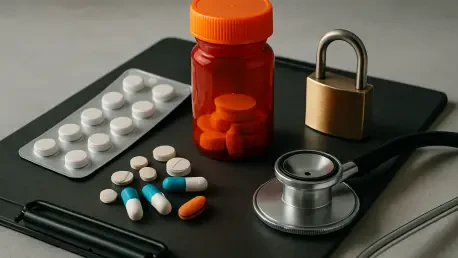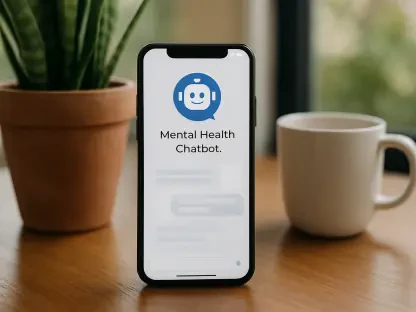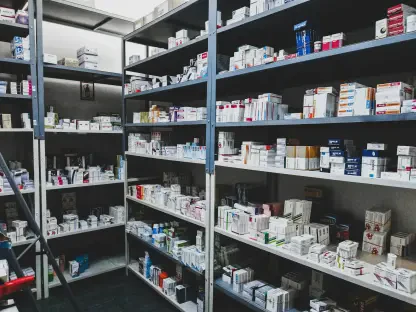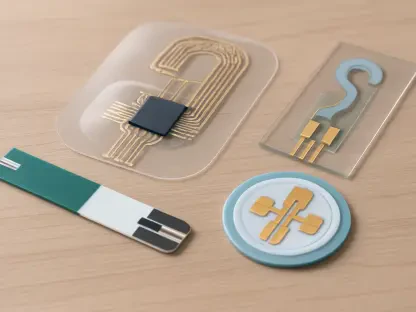In the complex and high-stakes world of healthcare, ensuring patient safety during medication administration stands as a critical challenge that demands innovative solutions to prevent errors and enhance care. At the University of Arkansas for Medical Sciences (UAMS) in Little Rock, a pioneering initiative led by Carlette Seng, PharmD, has redefined how medication errors are addressed by emphasizing “good catch reports.” These reports document potential issues or safety risks intercepted before they impact patients, turning near-misses into opportunities for improvement. What began as a focused effort to enhance reporting has not only skyrocketed the number of good catch submissions but also sparked an unexpected surge in overall medication event reporting. This transformative approach has fostered a culture of vigilance and trust across various pharmacy settings at UAMS, including inpatient, outpatient, infusion, perioperative, and regional programs. The ripple effect of this program highlights a powerful shift toward proactive safety measures in healthcare.
Cultural Transformation in Medication Safety
Redefining Error Reporting
At the outset of Dr. Seng’s leadership, the state of medication error reporting at UAMS was far from ideal, marked by low participation and reports that often lacked depth or actionable detail. By introducing the concept of good catch reports, the initiative reframed the narrative around errors, shifting the focus from criticism to celebration of proactive interventions. This strategic pivot encouraged pharmacy staff to document instances where they prevented potential harm, without fear of punitive consequences. The result was a noticeable uptick in engagement, as employees across different departments felt empowered to contribute to a safer environment. This change in perspective laid the groundwork for a broader cultural shift, where reporting became synonymous with problem-solving and improvement rather than blame. The emphasis on recognizing positive actions helped dismantle barriers to participation, creating a more collaborative atmosphere within the health system.
The impact of this redefined approach to error reporting became evident in the dramatic rise in good catch submissions over a short period. By focusing on successful interventions, UAMS saw monthly averages climb from under 20 reports in early data to over 117 by mid-2024, reflecting a nearly 500% increase in just a couple of years. This surge was not merely numerical; it signified a growing willingness among staff to engage with safety protocols actively. Beyond the numbers, the quality of reports improved as pharmacists began providing detailed accounts of intercepted issues, offering valuable insights for system-wide enhancements. This transformation underscored the importance of fostering a positive reporting culture, proving that encouragement and recognition can drive significant behavioral changes in a healthcare setting. The initiative’s early success set a strong foundation for further innovations in safety practices at UAMS.
Building Trust and Transparency
A key outcome of the good catch initiative at UAMS has been the cultivation of trust between pharmacy staff and the medication safety team, a vital component of sustainable safety improvements. As the program gained traction, employees observed that their reports—whether of good catches or actual errors—were met with responsiveness and a commitment to systemic change rather than individual criticism. This trust-building process was instrumental in encouraging greater transparency, as staff felt confident that their contributions would lead to meaningful action. The rise in overall medication event reporting, from just 34 reports in early 2023 to 93 by the start of the current year, reflects this shift. Such openness is a cornerstone of a just culture, where the focus lies on learning from incidents to prevent future harm, rather than assigning fault.
This newfound transparency has had far-reaching implications for the safety climate at UAMS, extending beyond the pharmacy department to influence broader organizational attitudes. Staff across various roles began to view reporting as a shared responsibility, integral to protecting patients from medication-related risks. Leadership’s role in reinforcing this culture cannot be overstated; by consistently acting on reported issues and providing feedback, the medication safety team demonstrated accountability, further solidifying employee confidence. The data from good catch reports also helped identify recurring patterns, enabling targeted interventions that addressed root causes of potential errors. This cycle of trust, reporting, and improvement has created a virtuous loop, where each element reinforces the others, ultimately enhancing the safety framework across the health system. The success in building such an environment offers valuable lessons for other institutions aiming to prioritize patient well-being.
Innovative Tools for Engagement
Sticky Notes as a Starting Point
One of the most ingenious aspects of the UAMS initiative was its initial reliance on a simple, low-cost tool: customized sticky notes bearing the institution’s logo to document good catches. These notes were placed on whiteboards in high-traffic, secure pharmacy work areas, serving as a constant visual cue of staff contributions to safety. This approach made reporting immediate and accessible, requiring minimal effort from busy pharmacists while maximizing visibility among peers. The public display of these notes in shared spaces fostered a sense of community, as team members could see and appreciate each other’s efforts in real time. This method proved particularly effective in engaging staff across diverse settings, from inpatient units to regional programs, by breaking down the formality often associated with error reporting and replacing it with a more approachable, collaborative process.
The sticky note strategy also played a crucial role in sparking initial momentum for the good catch program, demonstrating that impactful change does not always require complex or expensive solutions. By making the act of reporting tangible and visible, UAMS tapped into the power of peer recognition, which motivated more employees to participate. The simplicity of jotting down a quick note about a prevented error or safety concern lowered the barrier to entry, ensuring that even those hesitant to engage with formal systems felt included. Over time, these small, visible acts of contribution built a collective sense of pride and ownership over medication safety. Industry experts have noted the brilliance of this low-barrier entry point, highlighting how such personalized methods can inspire widespread adoption of safety practices in resource-constrained environments, paving the way for more structured interventions.
Leveraging Technology with EHR Integration
As the good catch initiative matured, UAMS recognized the need to scale its reporting mechanism through technological integration, leading to the addition of a dedicated “good catch” option in the electronic health record (EHR) system by mid-2023. This advancement allowed pharmacists to document interventions directly within their existing workflow, eliminating the need to navigate separate platforms or interrupt their routines. The seamless nature of this digital solution ensured that reporting remained a natural part of daily tasks, sustaining the high levels of engagement initially sparked by the sticky note method. By embedding safety documentation into a familiar system, UAMS made participation not only convenient but also a consistent expectation across pharmacy operations, reinforcing the importance of proactive error prevention.
The transition to EHR-based reporting also enhanced the accuracy and accessibility of data collected from good catch reports, providing a robust foundation for analysis and action. With digital records, the medication safety team could more easily identify trends, track recurring issues, and measure the program’s impact over time. This technological leap complemented the earlier, hands-on approach of sticky notes by adding efficiency and scalability, ensuring the initiative could grow without losing its personal touch. The integration reflected a broader trend in healthcare toward leveraging digital tools to streamline safety processes, aligning UAMS with industry best practices. Furthermore, it demonstrated a thoughtful balance between innovation and practicality, ensuring that technology served to empower staff rather than complicate their responsibilities, thus maintaining the program’s momentum.
Actionable Outcomes and System Improvements
From Reports to Real Change
The true value of the good catch initiative at UAMS lies in its ability to translate reported data into tangible system improvements, directly enhancing patient safety. Each report, whether documenting a near-miss or a prevented error, is analyzed with the same rigor as incidents involving harm, aligning with the principles of a just culture that prioritizes systemic solutions over individual blame. Between August of last year and March of the current year, an impressive 240 unique opportunities for enhancement were identified through these reports, leading to 120 concrete system changes—an average of 15 per month. Often guided by high-leverage intervention frameworks from the Institute for Safe Medication Practices (ISMP), these adjustments address vulnerabilities before they result in adverse events, showcasing the preventive power of proactive reporting.
This focus on actionable outcomes sets the UAMS program apart as a model of effective safety intervention, demonstrating that numbers alone are not the end goal. The process of turning insights from good catch reports into policy or procedural updates ensures that the initiative has a lasting impact on how care is delivered. For instance, recurring patterns in medication ordering or administration flagged through reports have prompted revisions to protocols, reducing the likelihood of future errors. The commitment to acting on every report, regardless of its scale, reinforces to staff that their contributions matter, further encouraging participation. This cycle of identification, analysis, and improvement underscores the initiative’s role in creating a safer healthcare environment, proving that small, documented actions can lead to significant, system-wide benefits over time.
Targeted Interventions
Among the many system changes driven by good catch reports, specific interventions highlight the initiative’s direct impact on patient care at UAMS. A notable example involves recurring issues with Lovenox (enoxaparin) orders during epidural procedures, a situation flagged repeatedly through staff submissions. Analysis of these reports revealed a systemic gap in the ordering process that heightened error risks, prompting a targeted update to the order set to mitigate such dangers. This adjustment, informed by data from proactive reporting, exemplifies how good catches can pinpoint precise areas of concern and lead to tailored solutions that protect patients. Such interventions not only address immediate risks but also prevent similar issues from arising in other contexts within the health system.
The success of targeted interventions like the Lovenox update illustrates the practical value of the good catch initiative in fostering a responsive safety framework. By focusing on high-risk areas identified through reports, UAMS ensures that resources are allocated where they are most needed, maximizing the impact of each change. Guidance from ISMP on prioritizing high-leverage fixes has further amplified the effectiveness of these efforts, aligning them with evidence-based best practices. The ability to act swiftly on specific insights from staff demonstrates a commitment to continuous improvement, setting a standard for how healthcare systems can use frontline observations to drive meaningful outcomes. This approach reinforces the notion that every report, no matter how minor it may seem, holds the potential to contribute to a safer, more reliable care environment.
Industry Recognition and Broader Implications
Alignment with Preventive Strategies
The good catch initiative at UAMS resonates with a growing industry emphasis on preventive safety measures, marking a shift from reactive responses to proactive risk identification in healthcare. By focusing on near-misses and intercepted errors, the program aligns with broader movements to address potential harm before it occurs, a strategy increasingly recognized as essential for patient well-being. Endorsements from the Institute for Safe Medication Practices (ISMP), including commendations from Christina Michalek, BS, RPh, affirm the critical role of such programs in modern safety protocols. The initiative’s ability to identify systemic risks early through detailed reporting offers a blueprint for preventing adverse events, a priority shared by health systems nationwide striving to enhance care quality through foresight and preparation.
This alignment with preventive strategies positions UAMS as a leader in medication safety, contributing to a collective push within the industry to redefine how errors are managed. The program’s focus on learning from good catches rather than solely addressing harm after the fact provides a forward-thinking model that prioritizes patient protection. Recognition from ISMP underscores the initiative’s relevance, as it mirrors recommendations for building robust safety nets through staff engagement and data-driven insights. The documented success in implementing 120 system changes in just eight months further validates this approach, offering evidence of its effectiveness in real-world settings. As healthcare continues to evolve, such proactive measures are likely to become standard, with UAMS paving the way for others to adopt similar frameworks to safeguard patients.
A Replicable Model for Safety
Reflecting on the journey of the good catch initiative, it becomes clear that UAMS crafted a replicable model by blending human-centric tools with technological advancements, a balance that other health systems can emulate. The early use of sticky notes provided an accessible, low-cost entry point that sparked engagement, while the later integration into the EHR system ensured scalability and efficiency as participation grew. This combination addressed both the emotional and practical needs of staff, fostering a culture of safety that translated into measurable improvements. The program’s adaptability across diverse pharmacy settings within UAMS suggests that its principles can be tailored to varying contexts, making it a versatile solution for institutions seeking to enhance medication safety without overhauling existing structures.
The broader implications of this model are evident in its impact on trust, transparency, and system-wide change, outcomes that any healthcare organization can aspire to achieve. The initiative’s success in driving a nearly 500% increase in good catch reports, alongside a rise in overall event reporting, demonstrates the power of positive reinforcement and actionable feedback. Support from ISMP highlights its potential as a benchmark for safety programs, emphasizing the value of starting small while planning for growth through digital tools. As health systems nationwide grapple with medication safety challenges, the UAMS approach offers a practical roadmap, encouraging others to invest in cultural shifts and innovative methods. This model’s legacy lies in its proof that prioritizing prevention and staff involvement can yield lasting, impactful results in protecting patients from harm.









